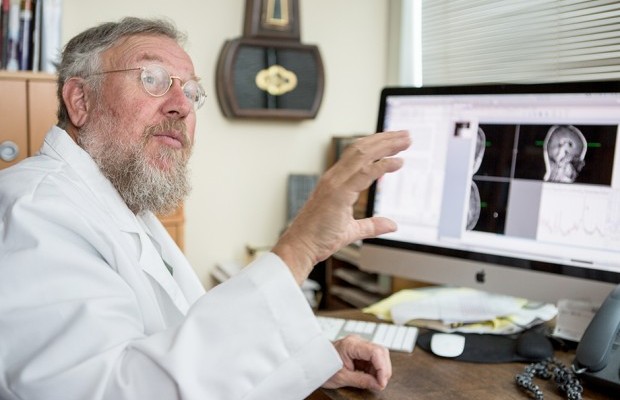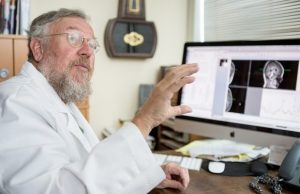 In an attempt to better understand noninherited autism on the small scale of brain chemistry, a group of UW researchers developed a novel plan to conduct brain scans on children from early childhood to their teenaged years.
In an attempt to better understand noninherited autism on the small scale of brain chemistry, a group of UW researchers developed a novel plan to conduct brain scans on children from early childhood to their teenaged years.
Although the causes of noninherited autism remain unknown, the study was able to see how autism affects the brain at the micro-level. It also proves promising for establishing a better understanding of how autism develops in the brain.
Published online last month in the journal JAMA Psychiatry, the study focused on the brain chemicals N-acetylaspartate (NAA), choline, creatine, myo-inositol, and combined glutamine and glutamate. The researchers found differences in the amounts of these chemicals in the brains of children with autism versus those of children with either typical or delayed development.
“We found … a very distinct pattern of chemical alterations in the brain,” said Stephen Dager, director of the Neuroimaging Research Lab at the UW. “These chemicals tell us things about brain development and brain energy metabolism and how things like mitochondria and other parts of the brain work together.”
The different chemicals have different functions. Choline, an essential nutrient formed in the liver, is used to treat depression. Creatine is an organic acid that supplies energy for muscles. Functions of NAA are still being studied, but decreased levels of NAA have been associated with several types of brain injury.
“There was a very dynamic [brain] process with the kids with autism, which we didn’t see with the kids with developmental delays,” Dager said. “It suggests there’s a very different process in the underlying pathophysiology — or the underlying mechanisms — that might cause autism.”
Annette Estes, director of the UW Autism Center, led the diagnostic assessments that recruited a core group of 45 children with autism to participate in the study. Estes and fellow researchers then studied chemical concentrations in the brains of those children at age 3 to 4, 6 to 7, and then 9 to 10 years of age. Of those initial 45 children, more than half stayed with the project throughout its duration.
Estes said that the new study is unique because it mostly used a longitudinal approach of research, which followed the same group of children during their development. However, they also used the more commonly used cross-sectional approach to study children with typical development. In the cross-sectional part of the research, they studied different children in each age group rather than following the same children over time.
“What [the longitudinal approach] does is allow us to address questions you can’t do cross-sectionally. Even if you had a bunch of kids at 3, 6, 9, and 12, you couldn’t really talk about [brain] changes as confidently,” Estes said.
Because they followed the same children throughout the study, the researchers were able to see how chemical levels changed in their brains over time.
This new study is part of the “Neuroimaging of Autism” project, which Dager has led for the past 15 years and which is funded by the National Institute of Health. Currently, the team is working on new projects involving the same participants, who are now teenagers, as well as much younger children.
They think there might be an event that occurs in the brain early during a child’s development that plays a role in the development of autism.
“[That] is why we’re now studying kids who are at high risk for autism,” Dager said. “To try to better pinpoint when these processes are occurring and better understand what the nature of this dynamic phenomenon is.”
One of the difficulties with trying to better understand autism is that the disorder can be dramatically different from one person to the next. Estes said while some children with autism do not seem to benefit much from early intervention, many do. She is currently leading a study that provides 15 to 25 hours of intense intervention per week for children with autism.
Early intervention involves a therapist meeting one-on-one with a child and teaching them with techniques similar to applied behavior analysis, the kind of behavior modification made popular by psychologist B.F. Skinner.
“In our studies, 98 to 99 percent of the kids have functional communication at the end of the intervention, which is astounding,” Estes said.
Estes is also currently investigating whether these techniques can be used by parents, as well as trained professionals.
“We’re hoping by really enriching these kids’ environments all the time, that they’ll get the best outcomes,” Estes said.
Both Estes and Dager emphasized the importance of not viewing autism as something that needs to be cured. Rather, autism, and other autism spectrum disorders are conditions that make people interpret their environment in different ways.
“Autism is such a peculiar condition,” Dager said. “It kind of embodies what it is to be human.”
Reach Features Editor McKenna Princing at science@dailyuw.com. Twitter: @McKennaPrincing


